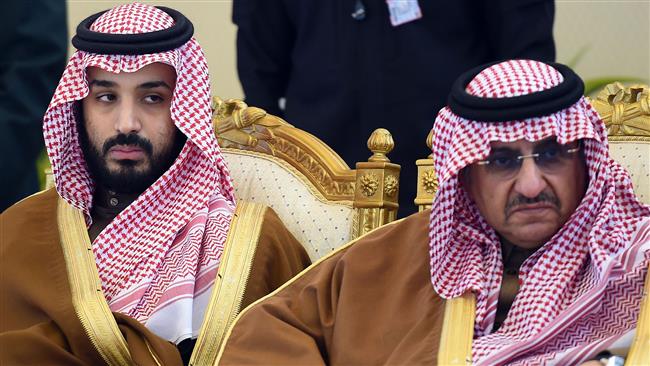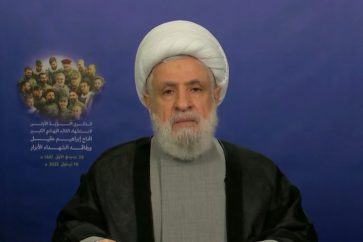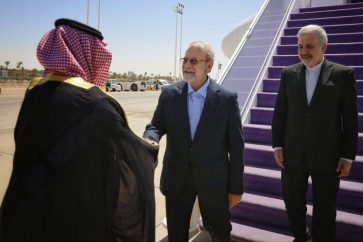Amine Abu Rashed
The $100 billion compensation prize handed to isolated crown prince Mohammed bin Nayef has not been the main event of what is taking place inside the house of the Saudi royal family. It is because the entire issue has started with isolating the deputy crown prince Megrin bin Abdul Aziz and assigning Mohammed bin Salman instead, allowing the King’s son later on move quickly towards the throne.
There is a quite important difference that “Megrin” is not as fierce as “bin Nayef”, the man with the great power inside the royal palaces. Therefore, the price to isolate him was costly, hitting some 20% of the kingdom’s annual budget of $500 billion. It is also 20 times equal to the “Maldives” annual budget, the whole island that King Salman rented in 2014 to spend one week with his retinue once he was the crown prince. All of the kingdom’s internal issues can be solved as long as oil revenues go as a “monthly royalty” to the King and the ruling family, whose princes from Abdul Aziz’s blood are 1500 princes divided between sons, grandsons and grand grandsons, whose ages range between more than 80 to at least one minute whenever a prince is born.
Despite the recently circulated media information saying “bin Nayef” has been under a sort of “house arrest,” a Saudi official replied as saying that “the news talking about limiting the residence of former crown prince inside the palace are not 100% true.” However, the main title of what has happened is about the royal order that was issued on 21/6/2017, after assigning bin Salman as the crown prince, which provided changing the primary law of ruling in Saudi Arabia. This royal order included an amendment of clause B of Article 5 in the primary law to the following: “Ruling is designated to the sons and grandsons of the founder King Abdul Aziz Al Saud, in which allegiance is paid to the fittest among them…, and after the sons of the founder king, there won’t be any king or crown prince from any other branch of the founder King’s ancestry.”
The phrase that says: “after the sons of the founder king, there won’t be any king or crown prince from any other branch of the founder King’s ancestry,” is just to appease the other family wings in which the sons are distributed between the wives of founder Abdul Aziz, because the “Sudairi” wing, in reference to Princess Hissa al-Sudairi is the strongest and most prominent one. This is because she has been the favorite and influential wife, in which two of her sons, King Fahd and current King Salman, were in charge of the throne. It is an unprecedented phenomenon, in which the bequeathing of throne used to take place between the brothers of Abdul Aziz’s sons, but has now turned to be between the father and his son to reach the grandsons. Meanwhile, a grandson here or there, from any other wing, is appeased with being assigned a crown prince, in an attempt to absorb the other wings’ indignation and reducing current hatred against the “ancestry of Abdul Aziz from Princess Hissa al-Sudairi,” like the Al Sheikh family to which Turfa bint Abdullah belongs, the second most prominent wife of Abdul Aziz, and the mother of King Faisal who ruled between 1964 and 1975 and was killed by one of his nephews in revenge for the death of the killer’s brother during a protest of religious hardliners against the opening of the first TV channel in Faisal’s era.
The problem of the grandson princes started during King Faisal’s era, who repeatedly opposed the absurd life they are living, in addition to wasting the wealth of oil revenues that are distributed among hundreds of them on a monthly basis without making any productive work. King Faisal issued royal orders to reduce those payments for some princes and to full cut them from others unless they join higher careers within the government, fitting the ancestry of Al Saud. This, however, didn’t stop their hatred and recklessness, and their competition to build fancy palaces inside the kingdom, as well as buying luxury houses and apartments in the UK, Spain, France and Egypt, in addition to possessing private planes and silver and gold-plated cars, besides their stock market investments and trade deals. Most of their money is deposited abroad in anticipation for the royal throne’s collapse. In this regard, American author Jean Sasson wrote a book in the early 1990s naming it “Princess Sultana” before she published another book entitled “The Daughters of Her Highness” about the confessions of a woman from the Saudi royal family, naming her “Sultana”. Her character decided to stand up against the corruption of this family, predicting that the throne will fall after the death of Abdul Aziz’s sons and moving the rule to the grandsons who are indeed distributed between rival family wings.
Those grandson themselves are the ones who turned things upside down in 2015 with the rising star of Mohammed bin Salman, indicting him with what they also are of absurd life, adding that he gathers around himself a retinue of young reckless inexperienced princes, and that the Kingdom’s escalation of its aggression against Yemen isn’t but a show of force from the “Sudairi wing” in front of other rival wings, saying that King Slaman has done this with an incitement of his son Mohammed. They themselves have recently become furious about Mohammed’s escalating tone against Iran, saying that he is dragging the kingdom towards a dilemma with dire consequences. Indeed, they are not keen on the regime’s stability as much as they are afraid of the family’s throne collapse and the evaporation of the “monthly royalty” from the oil revenues that guarantee their obscene wealth. This “monthly royalty” will remain a tax every king has to pay in order to silence those aspiring greedy members until the throne would collapse when the “cheese hunk” won’t be enough to fill all the stomachs…
Source: Al-Manar Website




